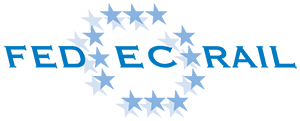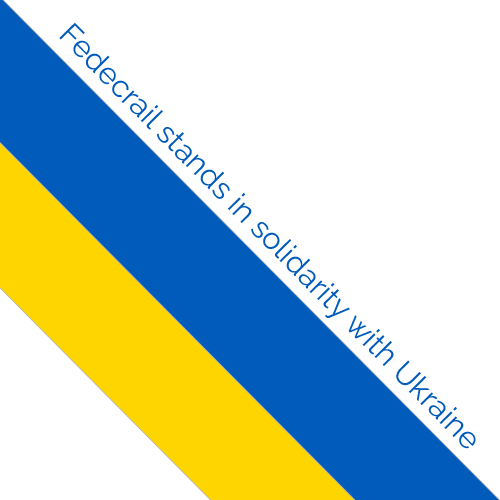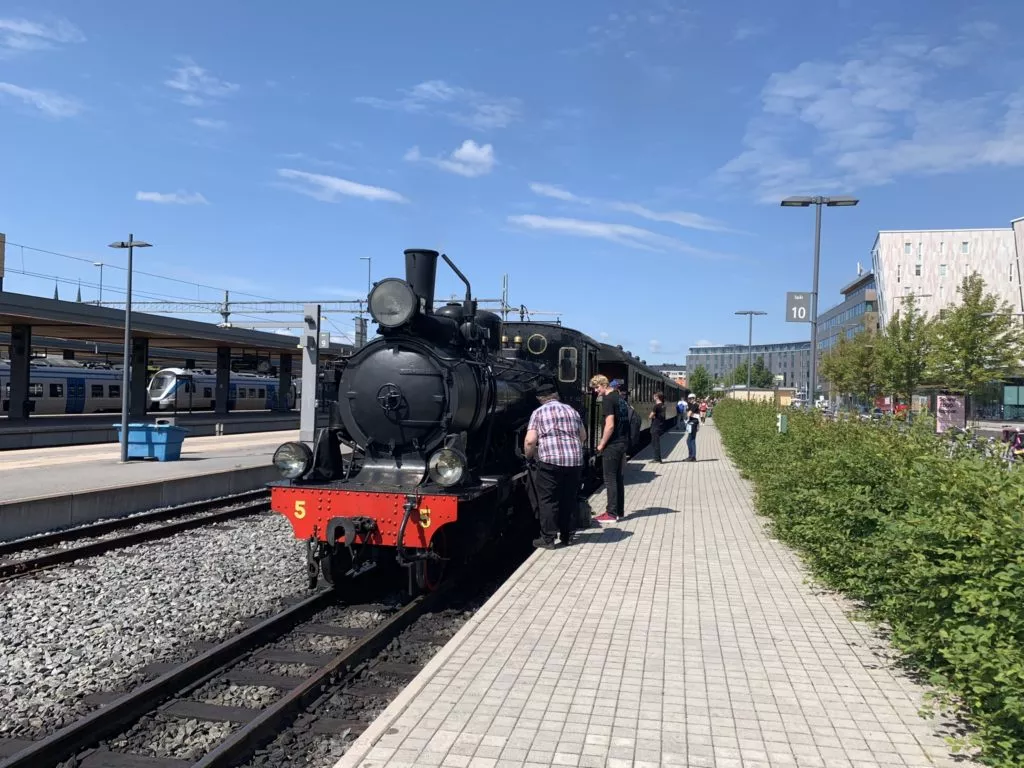
Museum – and Tourist Railways
Until the advent of the steam locomotive in the early 19th Century, man’s speed of passage over land was limited to that of his trusted friend, the horse. Railways revolutionised the way we live. For the first time, those other than the very rich, enjoyed the opportunity to travel long distances and the major improvement to distribution of goods not only lowered prices but made possible the industrial revolution. In the second half of the 20th Century, as the motor car and truck encroached into the railways’ traditional markets, many branch lines and minor railways fell into decline; and steam locomotives were replaced by diesel and electric motive power.
Groups in different parts of Europe acted to save and preserve our railway environment and to show its impact on our cultural and social history. We seek to recreate the era of unhurried travel and an atmosphere which often mixes the hiss of steam with the noise of clanking piston rods, the smell of burning coal and hot oil, and the colours of a more induvidual age.
All this has been achieved by the commitment of individuals prepared to spend time and money restoring railway artefacts and buildings to their former glory. Operating trains requires teamwork, and administration is usually implemented through organisations whose constitutions prohibit the distribution of profit, thus ensuring that any surplus is reinvested in the heritage railway.
The Aims and Objectives of FEDECRAIL
FEDECRAIL seeks to:
- Promote the rescue, restoration and operation of Europe’s railway heritage.
- Represent its members’ interests vis-a-vis international agencies and, in particular, the European Commission in Brussels and the European Parliament in Strasbourg.
- Encourage the exchange of ideas across national and cultural boundaries and foster co-operation between museum and tourist railway organisations including museums involved in railway heritage.
- Help provide advice and assistance for such organisations.
- Study and resolve problems shared in restoring and operating heritage railways.
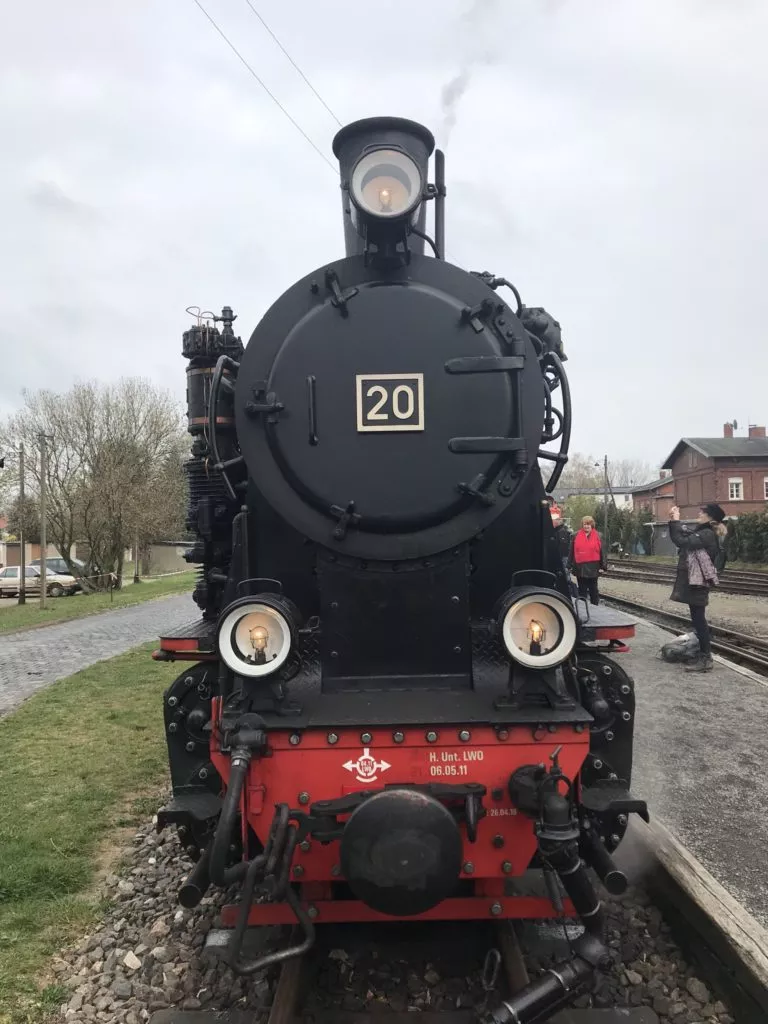
Key Facts About FEDECRAIL
FEDECRAIL – the Federation of European Museum and Tourist Railways – is an organisation under Belgian law. It was founded in April 1994 in Brussels and was authorised by royal Belgian decree.
FEDECRAIL – is the European parent organisation for all friends of railways who are engaged in the maintenance, preservation and operation of historical railways.
FEDECRAIL – has currently 43 members from 26 countries comprising 650 heritage railways and railway museums.
FEDECRAIL – every European national parent organisation for Museum and Tourist Railways can become a member of FEDECRAIL. Individual associations can only become members if there is no national organisation. Individual members or extra-European associations can join the circle of the “FRIENDS OF FEDECRAIL“ as promoters, patrons or sponsors but only as members without the right to vote.
FEDECRAIL – is a connecting link between the national parent organisations and the European committees (EU parliament, EU commissions, EU executive boards, etc.).
FEDECRAIL – is member of the Industrial Heritage Committee of Europa Nostra, Europe’s largest heritage organisation.
FEDECRAIL – is accredited member of the Goup of Representative Bodies at the European Agency for Railways (ERA).
FEDECRAIL – is the forum for discussions and the exchange of information for the European Museum- and Tourist Railways
FEDECRAIL – organizes since 2007 the European youth exchange for young museum railway workers.
FEDECRAIL – council, managing committee and technical representatives all come from European member associations and work exclusively on a voluntary basis.
FEDECRAIL – organises an annual conference with specific European topics about the Museum and Tourist Railways, such as the preservation and maintenance of the European heritage, regional regeneration, safety, financing, legislation harmonisation, environmental protection, etc. Study trips to member railways and museums with the opportunity to see ‘behind the scenes’ are always an element of the conferences.
Our Achievements so far
Despite the low budget on which it operates, FEDECRAIL can count several achievements to its credit:
- Persuading the Swedish Government to honour its commitment to pay 3,7 Million Swedish Kronor towards the re-instatement of a rural line.
- Government support for the re-opening of a metre-gauge line in southern France after flood damage.
- Recognition of the role played by heritage railways in European directives on railway access and franchising.
- Amendments to a new EU directive on mail and telephone order businesses (‘Distance-Selling-Directive’) that would have prohibited the requirement of pre-payment for services such as wine and dine specials.
- The withdrawal of a proposed EU directive on Safety in the Workplace on a Means of Transport (so-called ‘Hot Surfaces’ directive) which would have required heavy lagging of locomotive fire boxes and pipes and thus destroyed the authenticity of the locomotives.
- Research on smoke and exhaust gas emissions and on treatment of water for use in steam boilers.
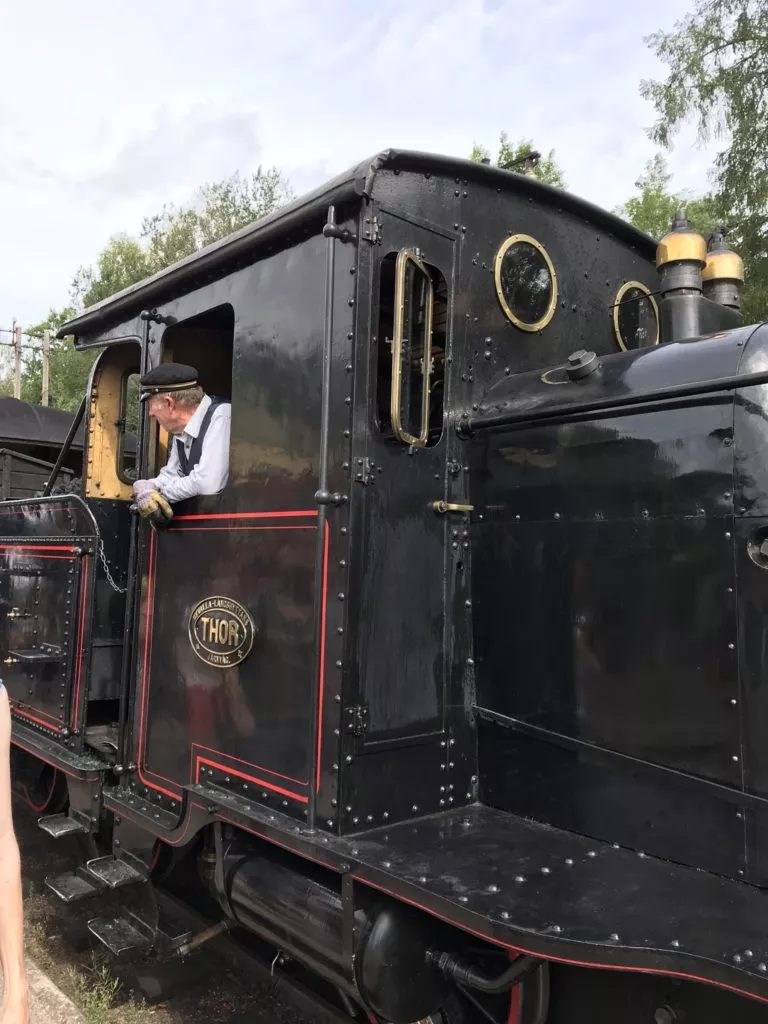
FEDECRAIL Members‘ Survey – 2014 Statistics
The most recent survey was produced in 2014 and therefore does not reflect the changes in the wider industry seen since Brexit and Covid-19. In 2022 Fedecrail will be requesting that each national member organisation forwards its annual data to formulate statistical reporting from 2019 onwards.
Members from 16 countries took part in the Fedecrail survey which was intended to cover economic, cultural and social perspectives on the significance of railways represented by the European Federation. Austria, Belgium, Denmark, Estonia, France, Germany, Italy, Latvia, Luxemburg, Netherlands, Portugal, Spain, Switzerland and Great Britain took part. The statistics come up with more than 20 million visitors per year for those responding. By some distance most, 11 million, were counted in Great Britain, followed by France with 3.7 million and Germany with 2.2 million and then Austria with 1.4 million visitors.
The railways operate altogether more than 5,200 route kilometres. The longest museum train route network with of 1,300 km is in Germany. France has almost as much with 1,200 km followed by Austria with 1,100 km, and Great Britain 890 km. In Italy, Portugal and Spain tracks owned by members are not represented. The number of steam locomotives amounts to some 2000. Far and away the greatest number of 866 exist in GB. Then follows Germany with 320 engines which is about the same as Austria (157) and France (150) together.
According to the survey across the whole of Europe there is a workforce of some 35,000 volunteers and 4,000 paid staff. Great Britain has the most volunteers with 19,100 and in France there are around 3,000 and Germany with 2,200. In addition, again GB has the most paid staff with 2,273 compared with France 800 and Germany 420.
The complete statistics of the umbrella organisations follow in detail:
| Country | GB | F | D | A | S | DK | N | B | NL | I |
| Member Rlwys | 179 | 95 | 80 | 35 | 36 | 18 | 7 | 9 | 29 | 20 |
| Visitors | 11 000 000 | 3 700 000 | 2 200 000 | 1 400 000 | 120 000 | 168 000 | 70 000 | 160 000 | 700 000 | — |
| Railway-km in use | 890 | 1 200 | 1 300 | 1 100 | 150 | 100 | 90 | 70 | 160 | — |
| Steam Engines | 866 | 150 | 320 | 157 | 120 | 75 | 11* | 16* | 91 | 25* |
| Volunteers | 19 100 | 3 000 | 2 200 | 850 | 1 300 | 740 | 160 | 350 | 1 700 | 600 |
| Paid Staff | 2 273 | 800 | 420 | 150 | 45 | 4 | 12 | 27 | 85 | 0 |
* steam locomotives in running condition
